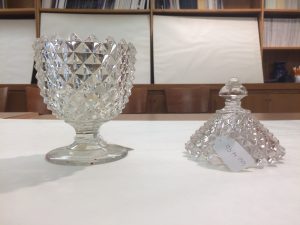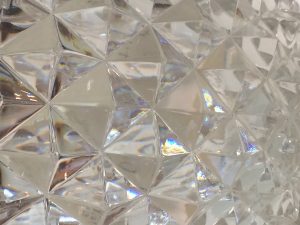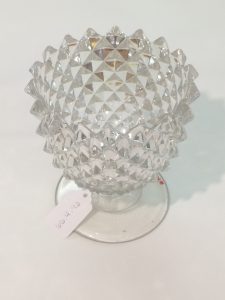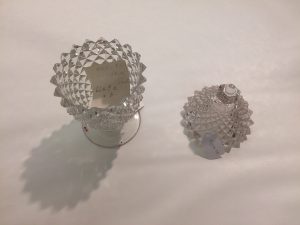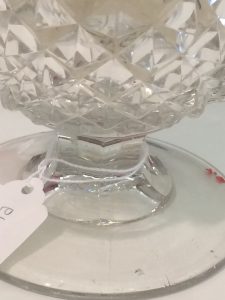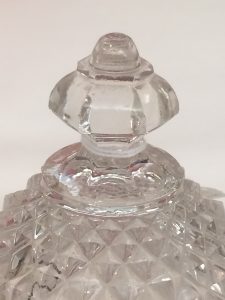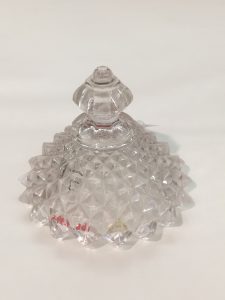Sugar Bowl and Cover.
This piece immediately caught my eye, as the geometry of the glass was very different from the glass pieces that I’ve seen previously. The piece appears to be a container of some sort, and is transparent with a repeating pattern of diamond-shaped pieces. The edges of the pieces are not very rounded, which, when the container was placed in the light, resulting in a fascinating diffraction of light—also part of the reason why I was so drawn to this piece initially. Due to the shape of the cut pieces as well and how the light interacts with the pieces, it was actually very difficult to see through the glass due to the constant diffraction of light, despite the glass being entirely transparent.
Despite the shape of the exterior of the piece, the inside of the container was round and smooth, indicating that the piece was actually meant to hold things. The piece was created to have both a functional and an aesthetic purpose.
Because I did not get to see the glass-blowing demonstration and have had very little experience working with glass in the past, I have a very limited idea of how this might have been created. I believe that the main part of the container and the stem of the piece were created separately, before being welded together—glass becomes malleable at extremely high temperatures, after all. To fashion the main portion of the piece, it’s possible that a simple, round, vase-like shape was either blown or shaped first, and the diamond-shaped pieces were individually formed and placed on the shape at a later time. Due to this, the glass in the container is extremely thick.
The complications with this is that it is difficult to uniformly form that many pieces by hand, so it is possible that the creator of the piece used a machine to make the diamonds look the same. The lid of the container was likely formed in a similar fashion. In addition, some of the pieces were not placed perfectly and are a little crooked.
